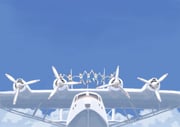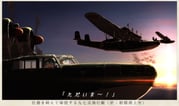h6k
H6K, or Kawanishi H6K, was a flying boat produced by the Kawanishi Aircraft Company and used during World War II for maritime patrol duties by Imperial Japanese Navy. The Allied reporting name for the type was Mavis; the Navy designation was "Type 97 Large Flying Boat" (九七式大型飛行艇).
The aircraft was designed in response to a Navy requirement of 1934 for a long-range flying boat and incorporated knowledge gleaned by a Kawanishi team that visited the Short Brothers factory in the UK.
H6Ks were deployed from 1938 onwards, first seeing service in the Sino-Japanese War and were in widespread use by the time the full-scale Pacific War erupted, in December 1941. At that time of the war, four Kōkūtai (air groups) operated a total of 66 H6K4s.
The type had some success over South East Asia and the South West Pacific. H6Ks had excellent endurance, being able to undertake 24-hour patrols, and were often used for long-range reconnaissance and bombing missions. From bases in the Dutch East Indies, they were able to undertake missions over a large portion of Australia.
However, the H6K became vulnerable to a newer generation of more heavily armed and faster fighters. It continued in service throughout the war, in areas where the risk of interception was low. In front-line service, it was replaced by the Kawanishi H8K.
See also
External links
- Wikipedia (JP): Kawanishi H6K
- Wikipedia (EN): Kawanishi H6K







